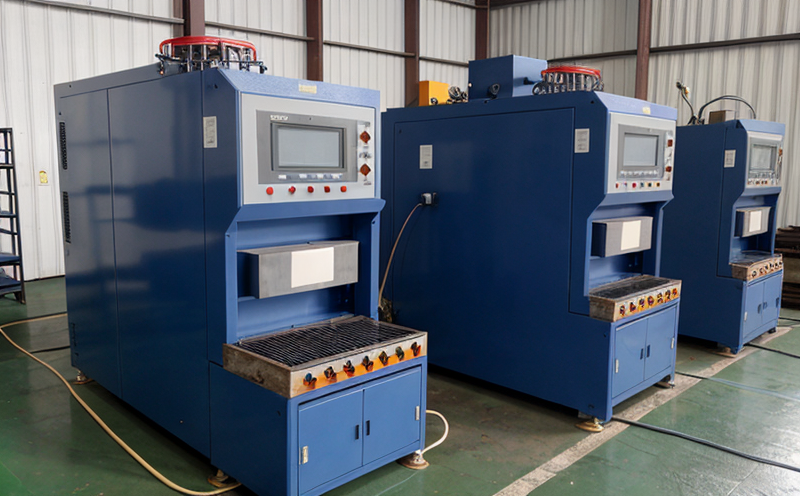EN 15148 Paper and Pulp Moisture Testing
The European Standard EN 15148 specifies methods to determine the moisture content in paper and pulp. This standard is particularly important for ensuring quality control, as moisture levels can significantly affect the performance characteristics of paper products.
Moisture content impacts various properties such as tensile strength, absorbency, and dimensional stability. In the context of industrial manufacturing, consistent moisture levels are crucial to meet product specifications and ensure operational efficiency. For instance, excessive moisture in pulp or paper can lead to increased energy consumption during drying processes, while insufficient moisture may result in poor mechanical properties.
The standard outlines several methods for measuring moisture content, including oven-drying, gravimetric analysis, Karl Fischer titration, and microwave techniques. Each method has its advantages depending on the desired precision and throughput requirements. Oven-drying is suitable for low-production environments where accuracy is paramount. Gravimetric analysis provides high accuracy but requires more time. Microwave methods offer rapid results with reasonable precision.
Before testing, samples are prepared according to specified guidelines in EN 15148. This may involve slicing or cutting the sample into representative pieces. The choice of specimen preparation depends on whether you're assessing bulk pulp or individual sheets of paper. Representative sampling ensures that the test results accurately reflect the overall quality of the batch.
The testing process itself involves placing the prepared samples in an oven at a specific temperature and humidity level for a defined period, allowing moisture to evaporate uniformly. The weight loss during this time is directly proportional to the initial moisture content. Careful attention must be paid to the drying conditions to avoid altering other physical properties of the sample.
Instrumentation used in EN 15148 includes precision scales and ovens equipped with temperature and humidity control systems. Advanced analytical instruments like Karl Fischer titrators or microwave moisture analyzers can also provide highly accurate results.
The acceptance criteria for passing a test according to EN 15148 are based on the specific application of the paper or pulp product. For instance, books require different moisture content levels compared to packaging materials due to their varying performance requirements. Compliance with these standards ensures that products meet industry benchmarks and customer expectations.
| Method | Description | Advantages | Disadvantages |
|---|---|---|---|
| Oven Drying | Place sample in oven at 103°C ±2°C until constant weight is achieved. | High accuracy; widely used for bulk materials. | Takes time, requires careful drying conditions to avoid alteration of other properties. |
| Karl Fischer Titration | Analyzes moisture by titrating reagents and measuring reaction volume. | High accuracy; suitable for small sample volumes. | Expensive equipment, complex setup. |
| Microwave Analysis | Rapidly heats sample to evaporate moisture using microwave energy. | Quick results; non-destructive method. | Potential for sample alteration, requires calibration. |
Why It Matters
The moisture content of paper and pulp is a critical parameter that influences both the manufacturing process and end-product quality. Variations in moisture levels can lead to inconsistencies in product performance, affecting everything from printability to recyclability. Consistent adherence to EN 15148 ensures that manufacturers produce high-quality products that meet customer expectations.
From an operational perspective, accurate moisture measurements help optimize energy consumption and reduce waste. For example, minimizing excess moisture during production can lower heating costs while maintaining product quality. In terms of environmental impact, ensuring proper moisture levels in recycled paper helps improve the efficiency of recycling processes, reducing landfill contributions from non-recyclable materials.
Compliance with EN 15148 also contributes to regulatory compliance and market access. Many industries have strict standards for moisture content in raw materials, and adherence to these standards can enhance a company's reputation and competitive advantage. Furthermore, consistent quality testing supports long-term relationships with suppliers and customers by ensuring reliability.
For research and development (R&D) teams, understanding the impact of moisture on paper properties is essential for innovation. By precisely controlling and measuring moisture content, R&D personnel can explore new applications or improve existing products without compromising performance.
Benefits
- Enhanced Product Quality: Ensures consistent properties across batches.
- Optimized Process Efficiency: Reduces energy consumption and waste generation.
- Improved Environmental Impact: Supports sustainable manufacturing practices.
- Maintained Customer Satisfaction: Consistency in product quality leads to higher customer satisfaction.
- Ease of Regulatory Compliance: Ensures adherence to international standards and local regulations.
- Innovation Opportunities: Precise measurement aids in exploring new applications or improving existing products.
Use Cases and Application Examples
The EN 15148 standard finds application across various sectors within the paper and pulp industry. Here are some specific use cases:
| Sector | Specific Use Case |
|---|---|
| Packaging Materials | Ensuring the moisture content does not affect printability or shelf life. |
| Writing Papers | Avoiding excessive moisture that could cause smudging during printing processes. |
| Bulk Pulp | Optimizing drying processes to minimize energy costs and achieve desired fiber properties. |





